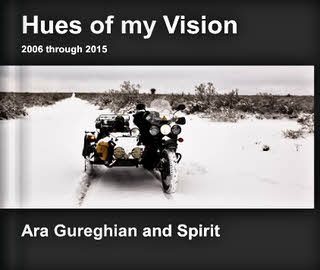 When I previewed this book in April, it was with the hope that a Kickstarter campaign would result in a bargain priced offset printed version. Ara had turned to the crowd funding site to facilitate pre-ordering the book in support of a cost saving bulk order. As noted in a mid-May update to the preview, the campaign failed resulting in the price of a hard copy more than doubling from $40.00 to $92.99. That’s the bad news. The good news is that it is beautiful.
When I previewed this book in April, it was with the hope that a Kickstarter campaign would result in a bargain priced offset printed version. Ara had turned to the crowd funding site to facilitate pre-ordering the book in support of a cost saving bulk order. As noted in a mid-May update to the preview, the campaign failed resulting in the price of a hard copy more than doubling from $40.00 to $92.99. That’s the bad news. The good news is that it is beautiful.
For those unfamiliar with Ara and Spirit, here’s a quick introduction. In 2006, following the death of his son, Ara Gureghian left his job as a personal chef and, accompanied by a rescued pit bull named Spirit, hit the road on Old Faithful, his BMW motorcycle. Since then, they have crisscrossed the country and spent lots of time in some of its emptier areas. Freedom on Both Ends of the Leash tells the story of those travels. Hues of my Vision contains a selection of the many photographs taken along the way.
There are 61 photographs; Each on its own page accompanied by a quote and a map. The maps mark the location and direction of the photo. The quotes are some that Ara has personally found meaningful. Ralph Waldo Emerson, Kahlil Gibran, John Muir, and Dan Aykroyd are among those quoted. Most of the quotes are unique but, whether by accident or design, a few are repeated. The paper is high quality and the pages are large. It’s a real coffee table book from a man and dog who haven’t had a coffee table in quite some time.
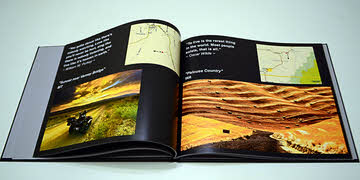 Not surprisingly, many of the photos are of America’s open spaces. Ara has visited and camped in some rather isolated spots and has captured some of their beauty. Canyons, lakes, and improbable shapes carved by wind and water are masterfully recorded and there are many gorgeous sunsets. A quote from Jo Walton really resonated with me:
Not surprisingly, many of the photos are of America’s open spaces. Ara has visited and camped in some rather isolated spots and has captured some of their beauty. Canyons, lakes, and improbable shapes carved by wind and water are masterfully recorded and there are many gorgeous sunsets. A quote from Jo Walton really resonated with me:
There is a Sunrise and a Sunset every single day, and they are absolutely free. Don’t miss so many of them.
Ara hasn’t missed too many during the last nine years and I’d like to think that I’ll not be missing so many from here on out.
Landscapes are in the majority but people and buildings appear, too. Some of those landscapes make marvelous backgrounds for photos of Spirit, Old Faithful, and even Ara himself. Subjects also include other people and animals and an occasional building. In these pictures, Ara has skillfully and artfully recorded the world he has been immersed in for nearly a decade. It’s largely a natural world that most of us only catch short glimpses of from time to time. He continues to report on that world through his blog, The Oasis of my Soul.
The book is available in electronic form for about $20. Is the hard copy worth the more than $70 premium?.I thought it was and am quite happy that I have the “real book” to hold in my hands. However, with the exception of size, I believe that everything I’ve said about the print version applies to the electronic versions as well. They might be just the thing for those without a coffee table. All formats are available here.
Hues of my Vision, Ara Gureghian and Spirit, Ara Gureghian (May, 2015), hard cover, 13 x 10 inches, 62 pages

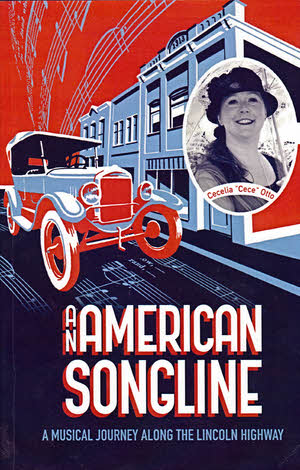 Cece’s a singer… and a traveler and now a writer. Cece (I know the book cover says Cecelia but few actually call her that.) has been singing since childhood. As an adult, she has spent a goodly amount of time singing professionally as a classically trained mezzo-contralto and there was travel, both in and out of the US, involved. Then, just as the career should have been accelerating, a stumbling economy resulted in it instead being sort of paused. Cece used the time to attend workshops and other activities to help in focusing her future. One workshop involved identifying, in a short amount of time, “…five projects you see yourself doing…” and one item on her hurriedly produced list was “singing travelogue”. No one, including Cece, was quite sure what that meant but it sounded intriguing and, before long, she was on her way to defining a real world project that included a coast-to-coast concert tour, a CD, and this book.
Cece’s a singer… and a traveler and now a writer. Cece (I know the book cover says Cecelia but few actually call her that.) has been singing since childhood. As an adult, she has spent a goodly amount of time singing professionally as a classically trained mezzo-contralto and there was travel, both in and out of the US, involved. Then, just as the career should have been accelerating, a stumbling economy resulted in it instead being sort of paused. Cece used the time to attend workshops and other activities to help in focusing her future. One workshop involved identifying, in a short amount of time, “…five projects you see yourself doing…” and one item on her hurriedly produced list was “singing travelogue”. No one, including Cece, was quite sure what that meant but it sounded intriguing and, before long, she was on her way to defining a real world project that included a coast-to-coast concert tour, a CD, and this book.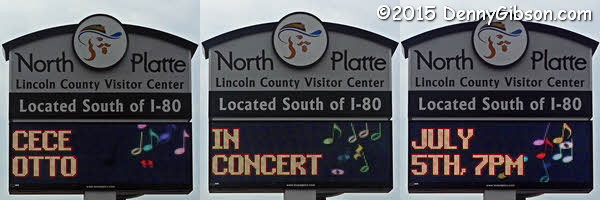
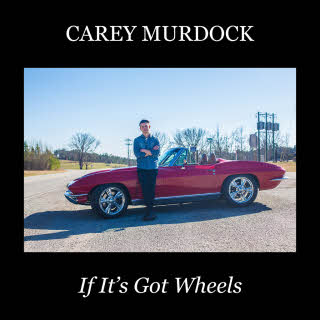 The title song is the opener and I’ll admit I found myself wondering if that was a good thing. “If It’s Got Wheels”, the song, is a V8-powered rocker that heads straight for the horizon like something Springsteen or the Eagles might drive. But then what? Did Murdock pick this tune to lead off and supply the name for his latest album because that’s all there is? The quickly apparent answer is a very loud NO. If It’s Got Wheels, the album, is filled with powerful songs performed by a collection of talented musicians.
The title song is the opener and I’ll admit I found myself wondering if that was a good thing. “If It’s Got Wheels”, the song, is a V8-powered rocker that heads straight for the horizon like something Springsteen or the Eagles might drive. But then what? Did Murdock pick this tune to lead off and supply the name for his latest album because that’s all there is? The quickly apparent answer is a very loud NO. If It’s Got Wheels, the album, is filled with powerful songs performed by a collection of talented musicians.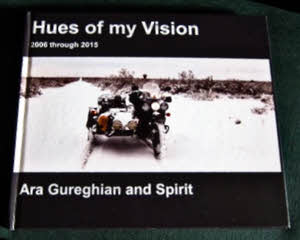
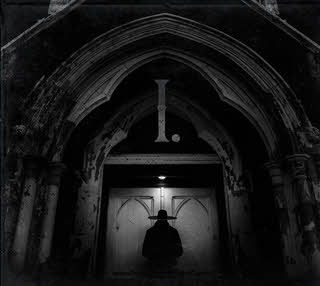 This CD makes me smile. Not laugh. Smile. It’s not funny but it sure is fun. It opens with a scene reminiscent of Michael Jackson walking with his girl in Thriller or Brad and Janet stumbling through the rain in The Rocky Horror Picture Show. Then, instead of dancing ghouls or an invitation to do the Time Warp, the stranded couple encounter the
This CD makes me smile. Not laugh. Smile. It’s not funny but it sure is fun. It opens with a scene reminiscent of Michael Jackson walking with his girl in Thriller or Brad and Janet stumbling through the rain in The Rocky Horror Picture Show. Then, instead of dancing ghouls or an invitation to do the Time Warp, the stranded couple encounter the 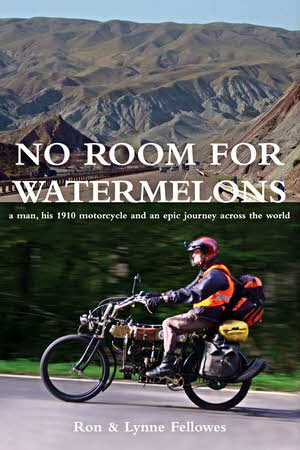 I don’t recall exactly when or even how I first discovered
I don’t recall exactly when or even how I first discovered 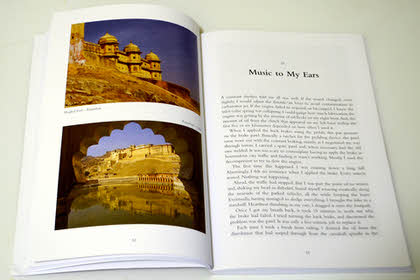 Both paperback and electronic versions of No Room for Watermelons are available through Amazon and I suppose that is the quickest and cheapest way to get a copy of this adventure. On the other hand, if you’d like something a little more personal and meaningful, signed copies can be had directly from the author
Both paperback and electronic versions of No Room for Watermelons are available through Amazon and I suppose that is the quickest and cheapest way to get a copy of this adventure. On the other hand, if you’d like something a little more personal and meaningful, signed copies can be had directly from the author 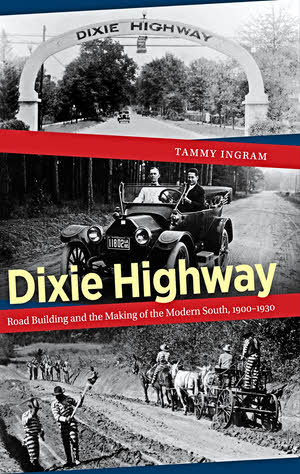 When I first heard about a forthcoming book titled Dixie Highway. I got kind of excited. I looked forward to having all my questions about the historic highway answered and all the blank spots filled in. Then, as details about the book started to emerge, I began to think it would not tell me anything about the Dixie Highway outside of Dixie; maybe nothing outside of Georgia. Reality, of course, is somewhere in between.
When I first heard about a forthcoming book titled Dixie Highway. I got kind of excited. I looked forward to having all my questions about the historic highway answered and all the blank spots filled in. Then, as details about the book started to emerge, I began to think it would not tell me anything about the Dixie Highway outside of Dixie; maybe nothing outside of Georgia. Reality, of course, is somewhere in between.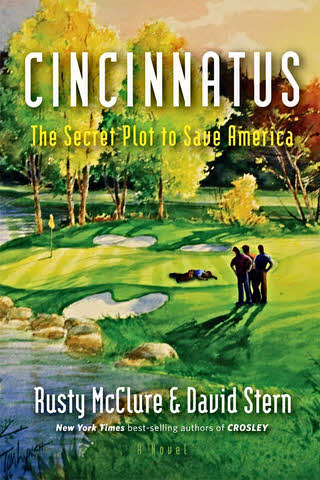 When this blog’s About page mentions reviews, it says they will not include “the latest novel”. When I wrote that, I was probably thinking “any novel”. I don’t read much fiction these days and I did not really expect to be reviewing any. I waited long enough to read this book that it is no longer the latest novel so my claim is still good. So is Cincinnatus.
When this blog’s About page mentions reviews, it says they will not include “the latest novel”. When I wrote that, I was probably thinking “any novel”. I don’t read much fiction these days and I did not really expect to be reviewing any. I waited long enough to read this book that it is no longer the latest novel so my claim is still good. So is Cincinnatus.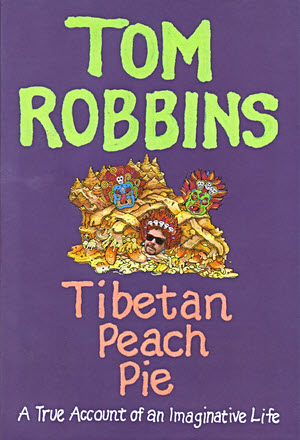 Yes, this is rather mainstream for me. I’m not in the habit of reviewing books that have appeared on the New York Times Best Sellers List. For one thing, it increases the chances of the amateurish nature of my offerings being found out. For another, such reviews are surely unneeded and are destined to have even less value than my reviews of niche releases. But I’ve never let the lack of need deter me from writing and, as for being caught impersonating a reviewer, I’ll take my chances. Just like Tom Robbins did at the Seattle Times.
Yes, this is rather mainstream for me. I’m not in the habit of reviewing books that have appeared on the New York Times Best Sellers List. For one thing, it increases the chances of the amateurish nature of my offerings being found out. For another, such reviews are surely unneeded and are destined to have even less value than my reviews of niche releases. But I’ve never let the lack of need deter me from writing and, as for being caught impersonating a reviewer, I’ll take my chances. Just like Tom Robbins did at the Seattle Times.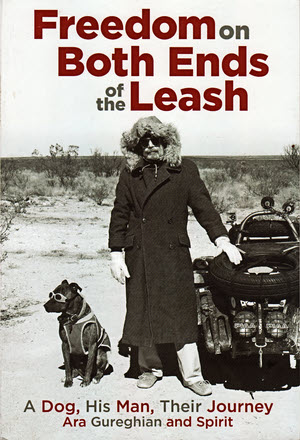 I really looked forward to the publication of this book. I certainly enjoyed reading it and expect to enjoy reviewing it once I get started but reviewing a book that is near impossible to describe isn’t all that easy. Saying it is the story of a man and dog traveling around the US on a motorcycle isn’t wrong but it sure is incomplete. The man, Ara Gureghian, and the dog, Spirit, have been traveling around the US on a motorcycle since November of 2006 with no plans to stop. I’ve followed their blog since April, 2007, and I have no plans to stop, either. When they started their journey, they were not leaving a home where they planned to someday return. They did acquire some land fairly early on and they do spend winters there but even it is more of a base camp than what most would call a home. From the beginning, Ara had called his online journal The Oasis of My Soul and the ten acres of Texas that his mother bought for him instantly became known as The Oasis. One definition of oasis is “something that provides refuge, relief, or pleasant contrast” and that is something both man and dog needed. Ara had suffered the painful loss of his son and Spirit has suffered abuse from a previous owner. Almost everything — the riding, the writing, the sunrises, the stars, the sunsets — is therapy to some degree but the writing is particularly therapeutic. Ara wrote, and continues to write, his journal for himself. He writes about his travels, his surroundings, and his thoughts. This book is something of a “Reader’s Digest” version of the journal. Neither book nor journal actually tries to be a travel guide or provide insights into living. Nonetheless, they do both.
I really looked forward to the publication of this book. I certainly enjoyed reading it and expect to enjoy reviewing it once I get started but reviewing a book that is near impossible to describe isn’t all that easy. Saying it is the story of a man and dog traveling around the US on a motorcycle isn’t wrong but it sure is incomplete. The man, Ara Gureghian, and the dog, Spirit, have been traveling around the US on a motorcycle since November of 2006 with no plans to stop. I’ve followed their blog since April, 2007, and I have no plans to stop, either. When they started their journey, they were not leaving a home where they planned to someday return. They did acquire some land fairly early on and they do spend winters there but even it is more of a base camp than what most would call a home. From the beginning, Ara had called his online journal The Oasis of My Soul and the ten acres of Texas that his mother bought for him instantly became known as The Oasis. One definition of oasis is “something that provides refuge, relief, or pleasant contrast” and that is something both man and dog needed. Ara had suffered the painful loss of his son and Spirit has suffered abuse from a previous owner. Almost everything — the riding, the writing, the sunrises, the stars, the sunsets — is therapy to some degree but the writing is particularly therapeutic. Ara wrote, and continues to write, his journal for himself. He writes about his travels, his surroundings, and his thoughts. This book is something of a “Reader’s Digest” version of the journal. Neither book nor journal actually tries to be a travel guide or provide insights into living. Nonetheless, they do both.